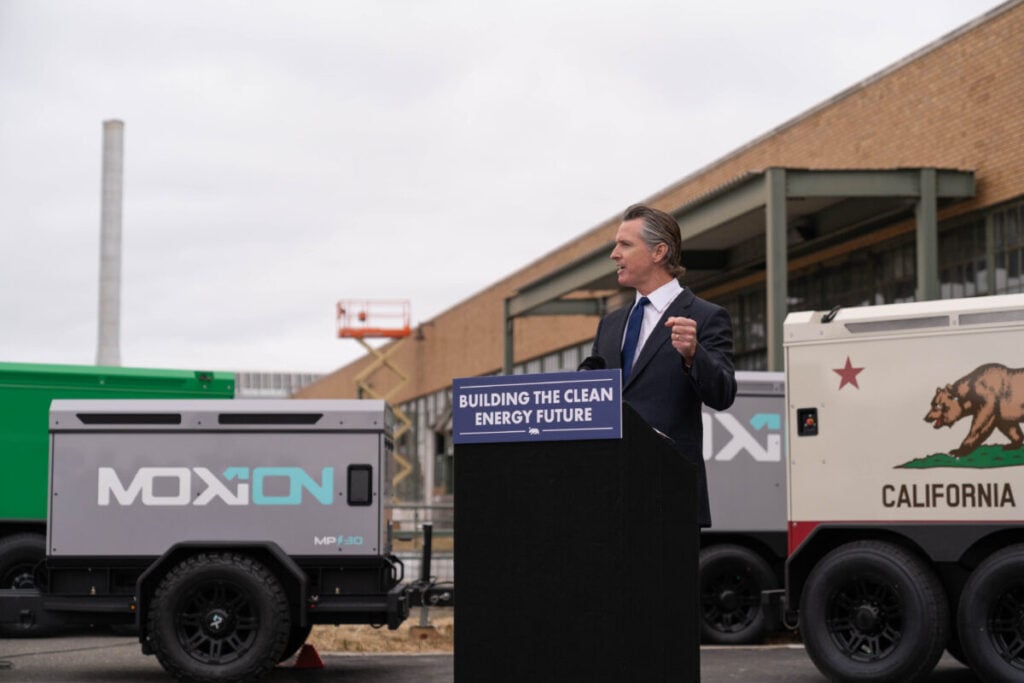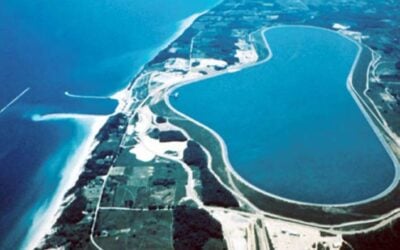
After imposing a moratorium on the development of new battery storage projects in January 2024, officials in Solano County, California, have adopted new zoning standards for the technology.
With the moratorium, enacted in January 2024, set to expire at the end of this year, Solano County’s planning department last week updated its Board of Commissioners on the progress of its new BESS zoning ordinance.
Unlike a handful of other local US jurisdictions that have chosen to ban the technology outright, Solano County’s planning department is taking a much more balanced approach to BESS zoning. It has embarked on a 20-month process of developing the new standards.
State must give due consideration to local planning and ordinances
During a recent Board of Commissioners meeting (12 August), Solano County Associate Planner Erik Hagstrom explained that the planning board has historically treated BESS projects as ordinary infrastructure developments without additional standards.
Try Premium for just $1
- Full premium access for the first month at only $1
- Converts to an annual rate after 30 days unless cancelled
- Cancel anytime during the trial period
Premium Benefits
- Expert industry analysis and interviews
- Digital access to PV Tech Power journal
- Exclusive event discounts
Or get the full Premium subscription right away
Or continue reading this article for free
Hagstrom explained that town officials have been involved in talks with Middle River Power and NextEra Energy Resources (NEER) over the construction of two separate BESS facilities within their jurisdiction so far.
As reported by Energy-Storage.news, NEER’s Corby BESS project is currently being assessed by the California Energy Commission (CEC) under its opt-in certification scheme.
This CEC approvals scheme was introduced by state governor Gavin Newsom in 2022 as an alternative to locally administered permitting processes for the developers of BESS projects exceeding 200MWh in size.
Although the CEC will ultimately have the final say over the project’s approval, Solano County’s Director of Resource Management, James Bezek, explained the importance of local zoning laws in the state-administered process.
“The State is required to give heavy consideration to our general plan or any ordinances that are in place”, said Bezek during the recent meeting.
The County Director noted that Solano County’s new BESS zoning ordinance will have “a lot of significance” on whether NEER’s Corby project is authorised, but only if it is completed in time.
Although NextEra has already filed an application for its Corby project with the State regulator, the CEC recently requested further information from the developer after deeming its application incomplete.
Solano County Planning Manager, Allan Calder, credited his staff for the CEC having not yet accepted NextEra’s application, with their efforts providing “input, information, questions, some best-practice standards and some goals that the County would like to see.”
Once the CEC deems an application complete, the state agency is required to approve or deny the project within 270 days. Under active consideration currently is Engie’s 1GWh Corby Energy Storage project that’s destined for the City of San Juan Capistrano in Monterey County.
The CEC recently deemed Engie’s application complete. It has until 25 January 2026 to approve or deny the development.
Balanced approach to BESS zoning
During the recent meeting, the Planning Department was interrupted by Solano County Commissioner Monica Brown, who expressed anger at the current situation.
“However this pans out today, I just have to share that I am very angry,” said Brown, before referring to the January fire at Vistra’s Moss Landing Energy Storage Facility in Monterey County, California.
“I really, really, really, resent the people right here going to Sacramento and doing a roundabout for us – I hate that, it is wrong, and that is why we have a planning commission,” said Brown, with regard to NEER attempting to obtain approval for its Corby project with the CEC.
“Why are we even here if somebody is going to make a determination of our lives, that bothers me,” added the Commissioner.
Commissioner John Vasquez echoed the sentiment of Brown and highlighted the potential issues of the CEC-administered process.
“If somebody can go to the State and get their project approved with less standards than what we would approve, it does create a double standard,” said Vasquez.
Despite Brown then calling for the Planning Department to implement very strict BESS zoning laws, Associate Planner Hagstrom explained how this wouldn’t be beneficial for the County in the long run.
“We’re trying to create an ordinance that’s not overly restrictive so it doesn’t give [developers] reason to go outside of us to go to the State, so it’s critical that we have some sort of balance,” said Hagstrom.
Regarding Moss Landing, Hagstrom added that “this type of system is not allowed anymore because of the problems it creates,” in reference to its indoor warehouse-style design and nickel manganese cobalt (NMC) battery chemistry.
As reported by Energy-Storage.news, a representative for independent power producer (IPP) Aypa Power described Moss Landing as a “blueprint for exactly how you do not want to construct a battery energy storage system” during a recent planning meeting for one of its proposed projects in Indiana.
‘Much more comprehensive’ ordinance created
In creating its BESS ordinance, the County formed a working group consisting of stakeholders from many sectors, including agriculture, emergency response, hazardous materials, and the energy storage industry itself.
In consultation with several expert organisations, including the National Fire Protection Association (NFPA), Underwriters Labs (UL) and the Electric Power Research Institute (EPRI), Solano County’s planning department has created an ordinance which Hagstrom believes is “much more comprehensive” than similar offerings from other local California governments.
That said, in common with most BESS ordinances, the County will, amongst other things, restrict BESS deployment in high fire-risk zones, enforce compliance with NFPA 855 and UL 9540 standards, require that emergency response plans be reviewed by local fire authorities, and prohibit indoor BESS facilities.
Although certain safety and permitting requirements have already been decided, the planning board is still undecided on setback requirements and whether to allow the deployment of BESS on agricultural land.





